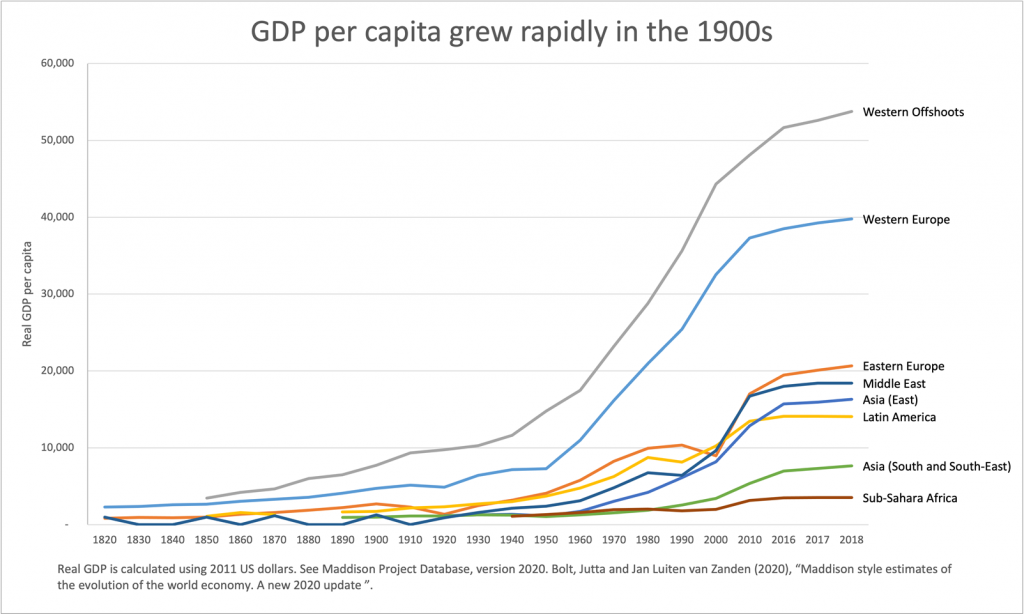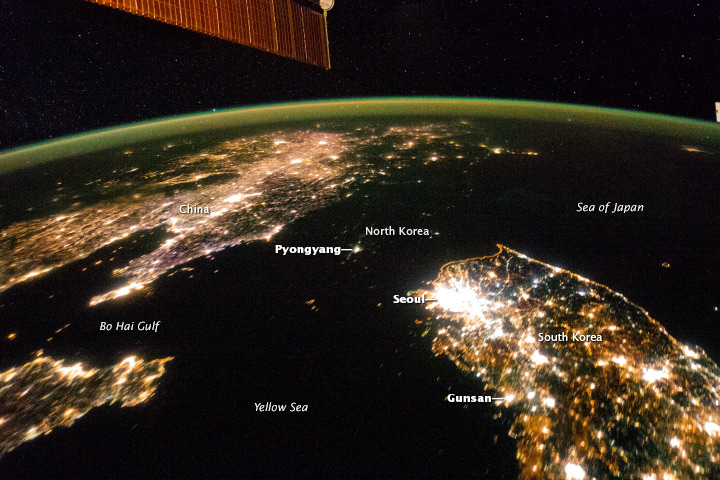3. Sources of Economic Growth
In this section, we review the main factors that foster economic growth, physical and human capital accumulation, technology, and institutions. Economic growth is the process through which the economy’s potential output is increased. Potential or “full employment” output is the level of output that the economy can produce sustainably if it employs all its factors of production fully and efficiently. Potential output is not the same as the maximum possible output an economy can produce. The economy can produce more than its potential if people work longer hours or extra production shifts. However, overusing resources to produce beyond the economy’s capacity is not sustainable and it puts upward pressure on prices. Actual GDP growth exhibits large cyclical patterns – it speeds up in expansions and slows down in recessions. Growth theory instead focuses on the long run, the period of time when wages and prices are fully flexible.
Recall the four factors of production in economics: labor, land, capital, and entrepreneurship. Basic economic models of growth ignore land and focus on the remaining three factors of production. We distinguish between physical capital and human capital. Physical capital includes the stock of buildings, machines, tools, and equipment that firms use to produce goods and services as well roads and other infrastructure. Human capital is the knowledge and skills we possess and acquire through education, training, and experience that make us more productive. Distinguish human capital from labour. Labour is the physical effort we exert in the production process. Entrepreneurship, which is also defined as technological knowledge in growth models, is not just technology used in the production process but knowledge about the best ways to produce goods and services. Thus, differences between the accumulation of factors of production, and the inability to organize production efficiently can explain differences in standards of living across countries that we observe.

Have a look at Figure 4, which depicts the historical growth in per capita GDP in selected regions of the world over the past 200 years. Prior to the Industrial Revolution, every generation, in every corner of the world, lived pretty much the same way as the previous one with little progress made in living standards since the dawn of civilization. As Thomas Hobbes, a 17th century English philosopher put it, life was “poor, nasty, brutish, and short.” Some estimates suggest that between 1 CE and 1820, a span of nearly 2,000 years, living standards in Western Europe and the United States doubled, from around $600 per person to around $1,200 per person[1]. During the next 200 years, however, between 1820 and 2018, living standards in the West rose by a factor of more than 20. In contrast, other regions of the world have lingered behind. This naturally leads to the question of why some countries have accumulated more physical and human capital and technology over the past 200 years than others.
A key determinant of economic growth ignored in basic economic models is institutions. Institutions can be broadly defined as the “rules of the game” that shape economic, political, and social interactions. Economic institutions include property rights and their enforcement by the government or the rule of law, competitive markets, political stability, and honest government. Institutions are key in shaping incentives and encouraging investment in technology, physical and human capital that drive economic growth.

Perhaps the most dramatic illustration of the importance of institutions in fostering prosperity is a picture of the Korean Peninsula at night (see Figure 5). The capital of North Korea, Pyongyang, with a population of about 3 million at the time this picture was taken, is a small island of light in a sea of darkness. Prior to their split in 1953, the two Koreas shared the same history, population, culture, government, and institutions. Some even consider that the North was more industrially developed than the South prior to the separation. However, after the separation, the two Koreas embarked on drastically different paths, governed by very different policies and institutions, and the result in terms of prosperity, 60 years later, is visible even from space.
- Jones (2016) ↵

